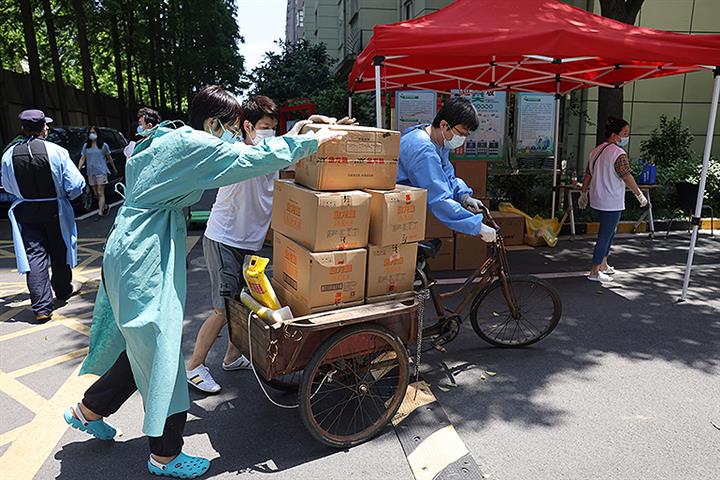 More Needs to Be Done to Help Businesses Survive Covid-19 to Avoid Enduring Fallout
More Needs to Be Done to Help Businesses Survive Covid-19 to Avoid Enduring Fallout(Yicai Global) May 10 -- The recent outbreaks of Covid-19 across China are posing a severe challenge to the normal operation of the economy and society. It is imperative that close attention is paid to find ways to help market entities survive, improve expectations and boost demand in order to prevent irreversible damage to China’s manufacturing industry.
The new waves, which started in March, have severely affected some of the country’s economic hubs along the eastern coast which account for 55 percent of gross domestic product, and the outbreaks are expected in some areas of the country to last until May.
As a result, the April Purchasing Managers’ Index for large enterprises slumped 3.2 percentage point to 48.1 percent, while that for small and medium-sized enterprises came in at 45.6 percent and 47.5 percent respectively, both decreasing by 1 percentage point from the previous month.
The production and new orders sub-indexes fell to their lowest level since March 2020, indicating that both output and demand have dropped significantly. The supplier delivery time sub-index plunged 9.3 percentage points from the previous month to 37.2 percent, also the lowest since March 2020, demonstrating that supply chains are in a dire state. And the inventory level sub-index reached a high 50.3, reflecting poor sales and big blacklogs.
If the domestic supply chain is shut down for too long, many micro and small firms will struggle. Some business might be extended to the global supply chain, all of which will weaken China’s competitive advantage to some extent.
A survey by the Shanghai Securities News showed that out of 667 firms polled, 92 percent said that the pandemic has affected operations and 37 percent said they have been badly hit.
We believe that if the economy in locked-down areas shrinks by 5 percent from normal in April and May, China’s economic growth rate may tumble to about 2.1 percent in the second quarter and to around 3.5 percent in the first half.
It should be pointed out that it is difficult to predict annual GDP growth at this point, and policies can be expected to come into effect quickly in areas less affected by the pandemic. China’s economy will be significantly better in the second half than in the first half.
In order to achieve the year’s economic and social development goals, we believe that it is essential to ensure smooth transportation and logistics as well as the normal operation of key industrial supply chains and core infrastructure. We need to stick to infrastructure investment as an important starting point for stabilizing growth.
Under the premise of insisting on reasonable housing prices, we need to adjust real estate restrictions appropriately. In order to promote the domestic economy and improve people’s livelihoods, we should support the healthy development of the platform economy. We also need to boost confidence and improve expectations throughout society. Moreover, monetary policies should be in tandem with fiscal policies to mitigate the spillover effect of the US’ Federal Reserve’s tightening monetary policies and imported inflationary pressures.
Editor: Kim Taylor